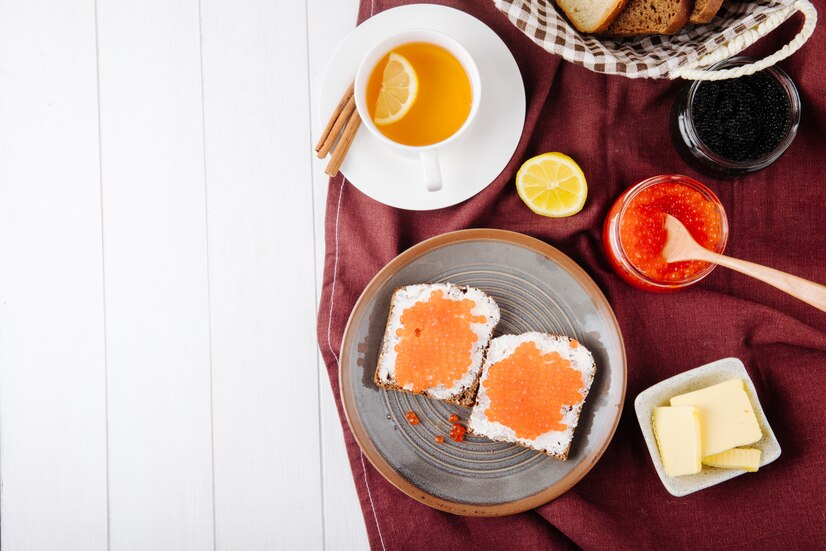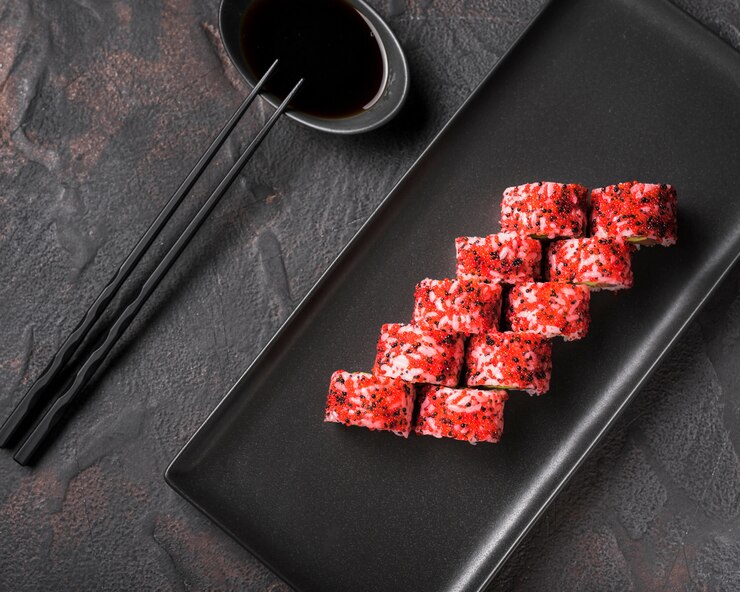Ikura, a delicacy revered in Japanese cuisine, holds a special place in the hearts of seafood enthusiasts worldwide. This article delves into the essence of ikura, exploring its origins, nutritional benefits, culinary versatility, and much more.
Ikura, also known as salmon roe, refers to the vibrant, glistening orbs of fish eggs harvested from various species of salmonids. These translucent spheres burst with a rich, briny flavor, making them a prized ingredient in sushi, appetizers, and gourmet dishes.
Types of Ikura
Salmon Ikura: Derived from the roe of salmon, this type of ikura boasts a bold flavor and a firm texture.
Trout Ikura: Harvested from trout roe, this variant offers a milder taste profile compared to its salmon counterpart.
Other Varieties: While salmon and trout ikura reign supreme, other fish species such as steelhead and chum salmon also yield delectable roe.
Nutritional Value of Ikura
Ikura packs a nutritional punch, serving as an excellent source of essential nutrients:
Rich in Omega-3 Fatty Acids: Ikura is renowned for its high omega-3 content, promoting cardiovascular health and cognitive function.
High Protein Content: With a substantial protein content, ikura aids in muscle repair and growth.
Other Nutrients: Ikura contains vitamins D, B12, and E, along with minerals like selenium and phosphorus, contributing to overall well-being.
Health Benefits of Ikura
Consuming ikura offers an array of health benefits:
Heart Health: The omega-3 fatty acids in ikura help lower blood pressure and reduce the risk of heart disease.
Brain Health: Omega-3s support cognitive function and may reduce the risk of age-related cognitive decline.
Skin Health: The vitamins and minerals in ikura promote healthy skin, combating signs of aging and inflammation.
Overall Well-being: The nutrient-rich composition of ikura contributes to enhanced vitality and immune function.
Culinary Uses of Ikura
Ikura lends itself to various culinary applications:
Sushi Topping: Ikura serves as a luxurious topping for sushi rolls and nigiri, adding bursts of flavor and texture.
Appetizer: Served atop blinis or crackers, ikura makes for an elegant appetizer, perfect for special occasions.
Garnish: Ikura enhances salads, pasta dishes, and hors d’oeuvres, elevating both flavor and visual appeal.
How to Make Ikura at Home
Creating homemade ikura is a rewarding culinary endeavor:
Ingredients: Fresh salmon roe, soy sauce, mirin (optional), and salt.
Preparation Steps: Rinse the roe, marinate in a soy sauce mixture, and refrigerate for several hours.
Tips and Tricks: Use high-quality roe, adjust marination to suit personal taste preferences, and handle with care to preserve texture.
Where to Find and Buy Ikura
Ikura is readily available at specialty stores and online retailers, ensuring accessibility to seafood enthusiasts worldwide. When purchasing ikura, opt for reputable suppliers known for their quality and freshness.
Storage and Shelf Life of Ikura
To prolong the freshness of ikura:
Refrigeration: Store ikura in an airtight container in the refrigerator for up to a week.
Freezing: Ikura can be frozen for longer-term storage, maintaining quality for several months.
Precautions and Considerations
While ikura offers numerous health benefits, it’s essential to exercise caution:
Allergy Concerns: Individuals with seafood allergies should avoid consuming ikura to prevent adverse reactions.
Mercury Content: Pregnant women and young children should limit their intake of ikura due to potential mercury exposure.
Popular Ikura Recipes
Explore the culinary versatility of ikura with these tantalizing recipes:
Ikura Don: A traditional Japanese rice bowl topped with ikura, served with a savory soy sauce marinade.
Ikura Gunkan Maki: Sushi rolls featuring a seaweed wrap filled with sushi rice and crowned with ikura.
Ikura Pasta: Pasta dishes adorned with ikura, offering a delightful fusion of Italian and Japanese flavors.
Cultural Significance of Ikura

In Japanese cuisine, ikura holds cultural significance, symbolizing abundance, prosperity, and celebration. It features prominently in festive occasions and traditional rituals, reflecting the deep-rooted connection between food and culture.
Sustainability and Ikura Fishing
As the demand for ikura grows, sustainability practices are crucial to preserve fish populations and marine ecosystems. Responsible sourcing and fishing practices ensure the long-term viability of ikura production, safeguarding the delicate balance of ocean ecosystems.
Conclusion
Ikura stands as a testament to the exquisite flavors and rich culinary heritage of Japanese cuisine. With its tantalizing taste, nutritional benefits, and cultural significance, ikura continues to captivate palates and inspire culinary creativity worldwide.
